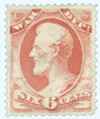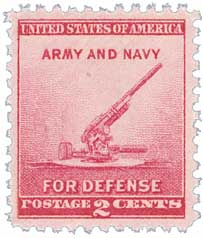
# O117 - 1879 6c Rose Red, War Department, Lincoln, Soft Paper
1879 6¢ Lincoln
Official Stamp – War
The Pentagon
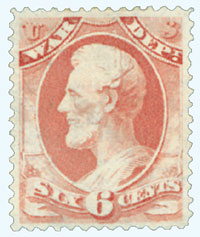
On January 15, 1943, construction on the Pentagon, the world’s largest office building, was completed.
In May 1941, President Franklin Roosevelt declared a state of national emergency, three weeks after Germany launched a surprise attack on the Soviet Union. For many, it seemed very likely that the US would soon enter the war.
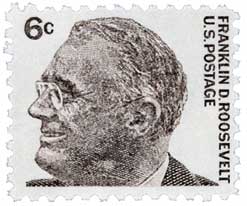
At the time, the US War Department was growing quickly. It included a staff of 24,000 people working in 17 different buildings throughout Washington DC. And it was expected the number of workers would increase to 30,000 by the following year. A new building for the War Department had just been completed, but it proved too small for the amount of personnel, and would later be used by the State Department instead.
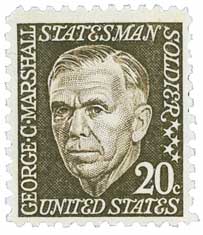
To solve the space issue, Army Chief of Staff George C. Marshall turned to General Brehon B. Somervell, head of the Army’s Construction Division. Somervell developed plans for a building with four million square feet of office space that could hold 40,000 workers. The building wouldn’t fit in Washington, DC, so he selected a site across the Potomac River in Virginia, just east of Arlington National Cemetery. The site was known as Arlington Farm and had once been part of Robert E. Lee’s estate.
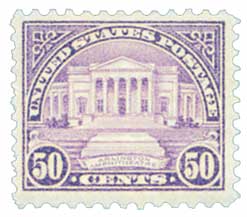
When Somervell’s architect began drawing up the design for the building, he had to base its shape on existing roads, which led to an asymmetrical five-sided building. Somervell decided that the building couldn’t be more than four stories high because of the wartime need for steel and also to prevent blocking views of Washington, DC. In the end, the design would be for a three-story building that he said could be completed within a year, and 500,000 square feet of which could be used within six months.
The House of Representatives and Senate passed legislation approving the construction in July and August, however, some began to question the building’s size and location, being so close to Arlington National Cemetery. President Roosevelt was moved by the protests and decided that the building would be moved three-quarters of a mile south and its size reduced to no more than 2.25 million square feet. The new site, known as Hell’s Bottom, didn’t require the pentagonal shape, but time was limited, so they decided to follow the original plans for the five-sided building, though it would now be symmetrical.
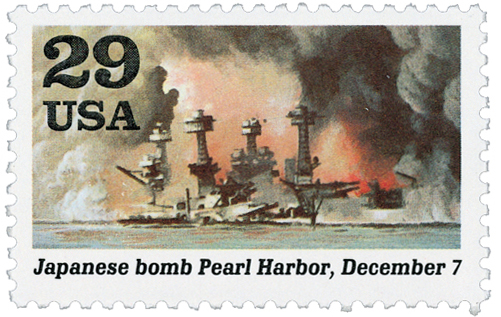
Construction on the Pentagon began on September 11, 1941. By December, 3,000 personnel could work there, but the construction was behind schedule. Following the Japanese attack on Pearl Harbor and the US entrance into the war, the rush to complete the building was intensified. By March 1942, there were 15,000 workers rushing to complete the building, working three shifts, 24 hours a day, with floodlights allowing them to work through the night.
Finally, on January 15, 1943, the Pentagon was completed and dedicated. The size had grown to 6.14 million square feet and the cost had increased from $35 to $75 million. After the war ended, many expected the building would be converted into a hospital, school, or headquarters for the Veterans Administration. But the building would remain home to the War Department and its successor, the Department of Defense. The Pentagon has since been added to the National Register of Historic Places and designated a National Historic Landmark.
1879 6¢ Lincoln
Official Stamp – War
The Pentagon

On January 15, 1943, construction on the Pentagon, the world’s largest office building, was completed.
In May 1941, President Franklin Roosevelt declared a state of national emergency, three weeks after Germany launched a surprise attack on the Soviet Union. For many, it seemed very likely that the US would soon enter the war.

At the time, the US War Department was growing quickly. It included a staff of 24,000 people working in 17 different buildings throughout Washington DC. And it was expected the number of workers would increase to 30,000 by the following year. A new building for the War Department had just been completed, but it proved too small for the amount of personnel, and would later be used by the State Department instead.

To solve the space issue, Army Chief of Staff George C. Marshall turned to General Brehon B. Somervell, head of the Army’s Construction Division. Somervell developed plans for a building with four million square feet of office space that could hold 40,000 workers. The building wouldn’t fit in Washington, DC, so he selected a site across the Potomac River in Virginia, just east of Arlington National Cemetery. The site was known as Arlington Farm and had once been part of Robert E. Lee’s estate.

When Somervell’s architect began drawing up the design for the building, he had to base its shape on existing roads, which led to an asymmetrical five-sided building. Somervell decided that the building couldn’t be more than four stories high because of the wartime need for steel and also to prevent blocking views of Washington, DC. In the end, the design would be for a three-story building that he said could be completed within a year, and 500,000 square feet of which could be used within six months.
The House of Representatives and Senate passed legislation approving the construction in July and August, however, some began to question the building’s size and location, being so close to Arlington National Cemetery. President Roosevelt was moved by the protests and decided that the building would be moved three-quarters of a mile south and its size reduced to no more than 2.25 million square feet. The new site, known as Hell’s Bottom, didn’t require the pentagonal shape, but time was limited, so they decided to follow the original plans for the five-sided building, though it would now be symmetrical.

Construction on the Pentagon began on September 11, 1941. By December, 3,000 personnel could work there, but the construction was behind schedule. Following the Japanese attack on Pearl Harbor and the US entrance into the war, the rush to complete the building was intensified. By March 1942, there were 15,000 workers rushing to complete the building, working three shifts, 24 hours a day, with floodlights allowing them to work through the night.
Finally, on January 15, 1943, the Pentagon was completed and dedicated. The size had grown to 6.14 million square feet and the cost had increased from $35 to $75 million. After the war ended, many expected the building would be converted into a hospital, school, or headquarters for the Veterans Administration. But the building would remain home to the War Department and its successor, the Department of Defense. The Pentagon has since been added to the National Register of Historic Places and designated a National Historic Landmark.



